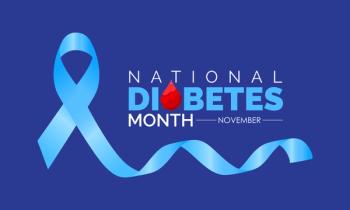
Pharmacists, Decision Makers Should Elevate Cytogenetic Testing in the Care of Patients With CLL
The nature of CLL being a long-term, incurable disease makes its treatment a challenge as it is more focused toward improving patient’s quality of life.
Chronic lymphocytic leukemia (CLL) is a long-term, incurable disease, but people don't die from it as often as they did 10 to 15 years ago, explained Shaffee Bacchus, PharmD, FASN, during a presentation at the 2022 ATOPP Summit. Today, there are good options out there for treatment of CLL. Especially in the era of precision medicine, there are tools available that can be utilized to better treat CLL than was possible a decade ago.
In 2021, data showed that there are approximately 2000 patients living with CLL, and approximately 4000 patients who die every year from the disease. Further, approximately two thirds of the patients who are diagnosed are aged 65 years or older.
“So for instance, for those of you that are working in health plans, if you have a million members, you can expect to have 50 newly diagnosed patients with CLL per year,” Bacchus said.
Bacchus noted that for patients diagnosed with CLL, the median time to diagnosis is about 7 years, and then these patients die approximately 10 years later at an approximate age of 81 years.
“What is important to understand is that the prognosis is pretty good, and the 5-year survival is 87%,” Bacchus said. “So today, patients don't die from CLL, they die with CLL, and that gives us a challenge because we need to understand how we can treat them and help them have a really good quality of life.”
Due to the variety of disease, Bacchus noted that all treatment approaches in CLL should be as targeted as possible. However, although the National Comprehensive Cancer Network (NCCN) guidelines make specific recommendations for how to approach treatment to support a more targeted therapy regimen, the data show that these guidelines are not being followed in the way that they should be.
“We do see that the guidelines do recommend the use of prognostic testing,” Bacchus said. “But in the real world, in the community setting, cytogenetic testing is not being used to guide therapy, and that we know is suboptimal, and the alignment with guidelines also can be improved.”
In terms of alignment with the guidelines, Bacchus noted that 36% of patients were not aligned to the NCCN guidelines in 2017. In the relapsed/refractory setting, 40% of patients were not aligned to the NCCN guidelines. Bacchus explained this lack of cytogenetic testing occurring in the relapsed/refractory setting in particular is disturbing because patients with CLL in the relapsed/refractory setting often have cytogenetic risk factors that should be assessed to appropriately target their treatment.
However, Bacchus noted that there are methods pharmacists and decision makers can take to improve current alignment to NCCN guidelines for CLL treatment.
“So it's really 2-fold, we need to elevate the use of cytogenetic testing, and we need to work at incorporating them into our work stream and into the work stream of the care of patients with CLL,” Bacchus said. “We need to make sure that as we do this, we're setting a stage where we're practicing evidence-based medicine and we’re using that as the crux of our determinations.”
Bacchus noted that determinations should also consider economic feasibility for the patient. Specifically, conducting cytogenetic testing for patients may be able to support this goal as well.
“What we see here, although the data is relatively immature at this early stage, we do see that those patients where testing was performed do seem to do better economically with regard to health care resource utilization from a hospitalization perspective and from an acute care perspective—so less emergency room utilization,” Bacchus said. “But this is just a trend.”
In order to assess this trend in more details, Bacchus explained further analysis of the data is needed. “We need to just spend more time looking at that information,” Bacchus said.
Bacchus additionally pointed out that the first data set demonstrating this trend was presented at ASCO in 2020. Then, in 2022 at ASCO, further analysis of the data set was presented that specifically looked at health care disparities with cytogenetic testing.
“As you can imagine, it followed the same trend here,” Bacchus said. “In African American patients, their rate of receiving cytogenetic testing was approximately 28%.”
REFERENCE
Bacchus S. Prognostic Biomarker Testing to Optimize Management of CLL/SLL. San Diego, CA: 2022 ATOPP Summit; July 16, 2022.
Newsletter
Stay informed on drug updates, treatment guidelines, and pharmacy practice trends—subscribe to Pharmacy Times for weekly clinical insights.


















































































































































































































